Seaweed can decrease nitrogen and phosphorus loadings
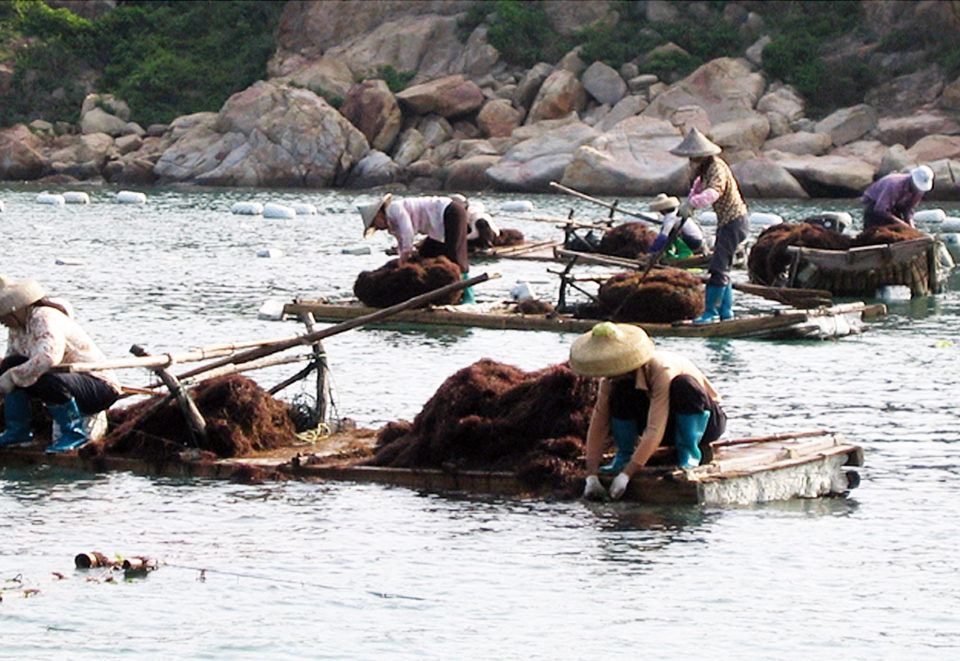
Within China’s mariculture sector, culture of the red agarophyte Gracilaria has rapidly expanded over the past 10 years. Production of Gracilaria reached 99,451 metric tons in 2007 and for seaweeds ranked only behind the kelps Saccharina and Undaria.
The principal Gracilaria species cultured throughout China is G. lemaneiformis. Growth rates for the seaweed range up to 13.9 percent/day in Jiaozhou Bay in Shandong Province.
G. lemaneiformis is very effective in decreasing nitrogen and phosphorus loadings. The seaweed is also able to inhibit the growth of some microalgae and may increase dissolved oxygen in the water column. Large-scale Gracilaria cultivation can be an effective means of improving water quality and promoting a more sustainable mariculture industry in China.
Bioremediation benefits
Nanao is an island county of Guangdong Province with a population of about 70,000. Of these, about 5,000 people are now engaged in the cultivation of Gracilaria. The area of cultivation rose from 0.06 hectares (ha) in 1999 to 800 ha in 2006. The seaweed provides several beneficial functions.
Biofiltration
The rapid development of the mariculture industry has aroused concerns about the effects of these activities on the Chinese coastal environment, which can include deterioration of water quality and an increase in contaminants.
Mesocosm experiments demonstrated that G. lemaneiformis can effectively remove inorganic nutrients from water. Concentrations of ammonium nitrogen decreased by 85.53 and 69.45 percent, and concentrations of phosphate decreased by 65.97 and 26.74 percent in the mesocosms with Gracilaria in comparison to mesocosms without the seaweed. In 24-hour enclosure experiments, Gracilaria removed 68.44 percent of ammonium nitrogen, 23.03 percent of nitrate nitrogen and 13.04 percent of nitrite nitrogen.
The maximum uptake rates of nitrate nitrogen, ammonium nitrogen and phosphate by G. lichenoides were 55.88, 35.17 and 3.106 umol/g/h, respectively. The corresponding rates for G. lemaneiformis were 53.17, 32.24 and 3.064 umol/g/h, respectively. These studies confirmed that Gracilaria species are good candidates for nutrient removal.
Increased D.O. concentrations
Testing during 17 visits to the Shenao culture area in Nanao showed that dissolved-oxygen (D.O.) levels were highest in cages with Gracilaria, second highest in the surrounding sea water outside the cages and lowest in cages with fish.
A 12-day experiment found that concentrations of D.O. were always higher in 1-m3 mesocosms with Gracilaria than those without it (Fig. 1). These results demonstrated that cultivated Gracilaria is very effective in improving D.O. levels in mariculture areas.
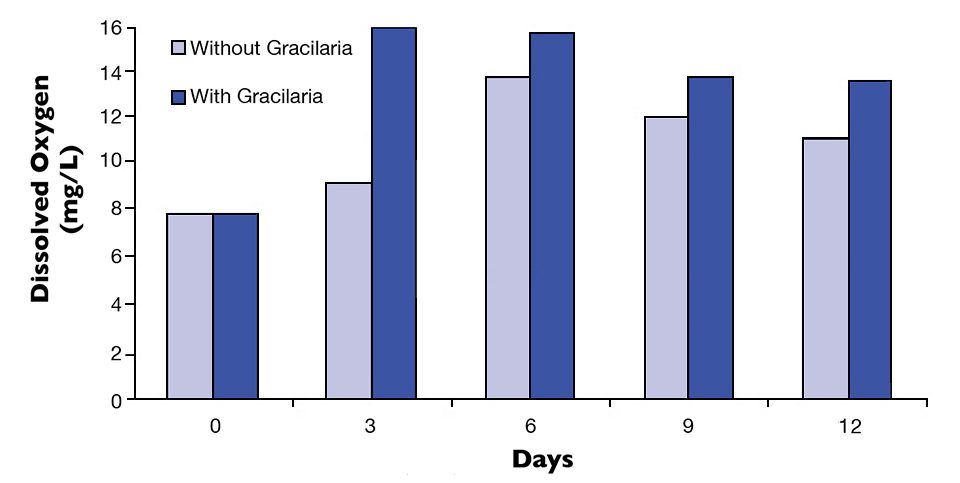
Decreased microalgae densities
The mesocosm experiments also demonstrated that G. lemameiformis limited microalgae growth. The densities of phytoplankton increased from 3.017 x 104 to 105.500 x 104 cells/L in the mesocosms without Gracilaria, whereas the densities increased from 2.387 x 104 to 26.500 x 104 cell/L in those with Gracilaria. The densities of phytoplankton were always lower in the mesocosms with Gracilaria (Fig. 2).
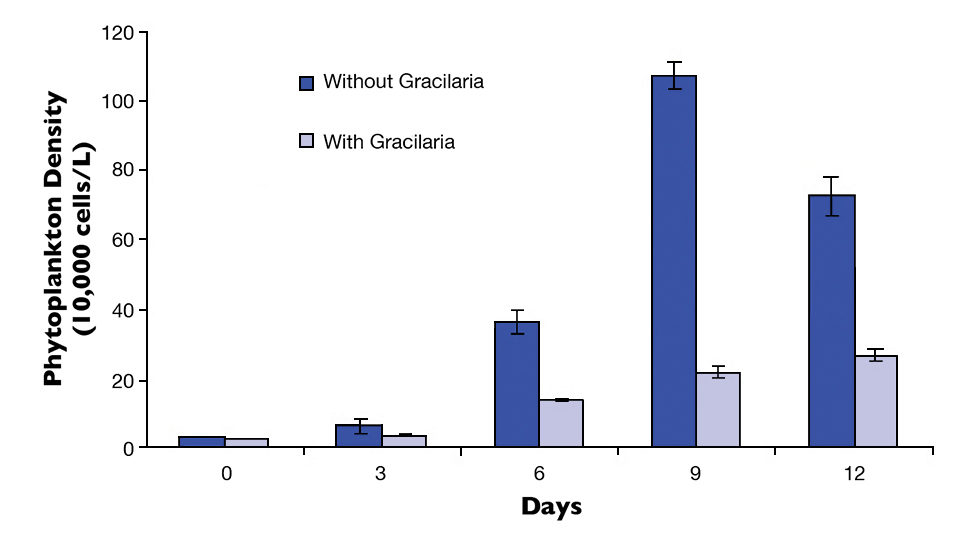
Other experiments demonstrated that the fresh thalli of G. lemaneiformis significantly inhibited the growth of selected microalgae: Prorocentrum donghaiense, Alexandrium tamarense, Amphidinium cartera, Scrippsiella trochoide and Chaetotoceros curvisetus.
The results showed that Gracilaria can suppress growth and decrease densities of these microalgae. Large-scale cultivation of Gracilaria may be an effective ecological strategy to control harmful algal blooms in Chinese coastal waters.
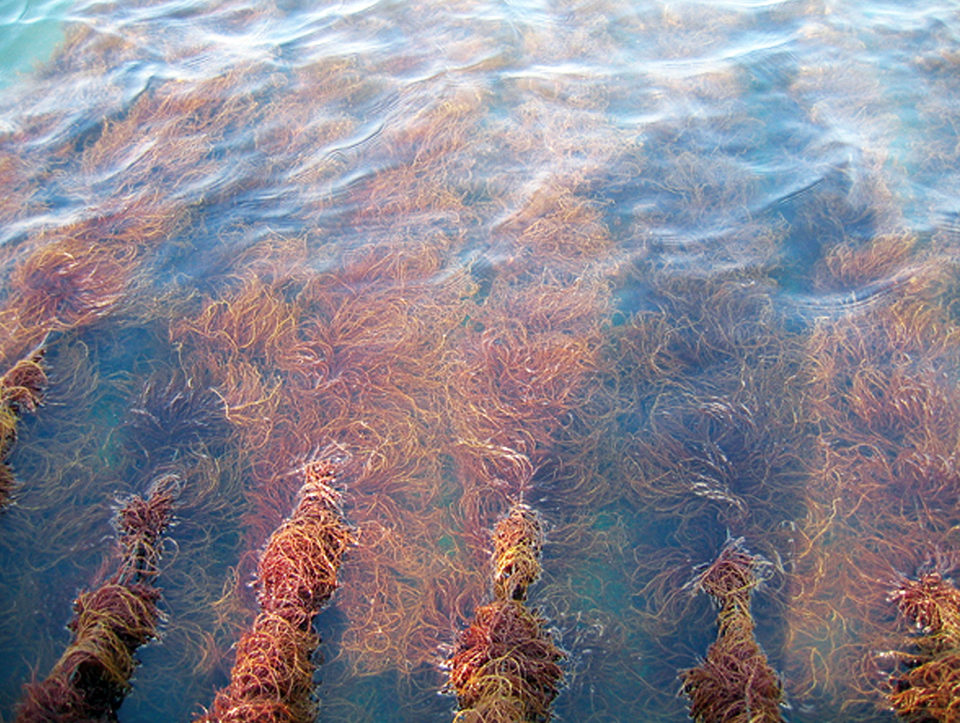
(Editor’s Note: This article was originally published in the January/February 2011 print edition of the Global Aquaculture Advocate.)
Authors
-
Dr. Yufeng Yang
College of Life Science and Technology
Jinan University
Guangzhou, China -
Dr. Charles Yarish
Department of Ecology and Evolutionary Biology
University of Connecticut
Stamford, Connecticut, USA
75 North Eagleville Road
Unit 3043
Storrs, Connecticut 06269 USA[117,100,101,46,110,110,111,99,117,64,104,115,105,114,97,121,46,115,101,108,114,97,104,99]
Tagged With
Related Posts

Responsibility
A look at integrated multi-trophic aquaculture
In integrated multi-trophic aquaculture, farmers combine the cultivation of fed species such as finfish or shrimp with extractive seaweeds, aquatic plants and shellfish and other invertebrates that recapture organic and inorganic particulate nutrients for their growth.
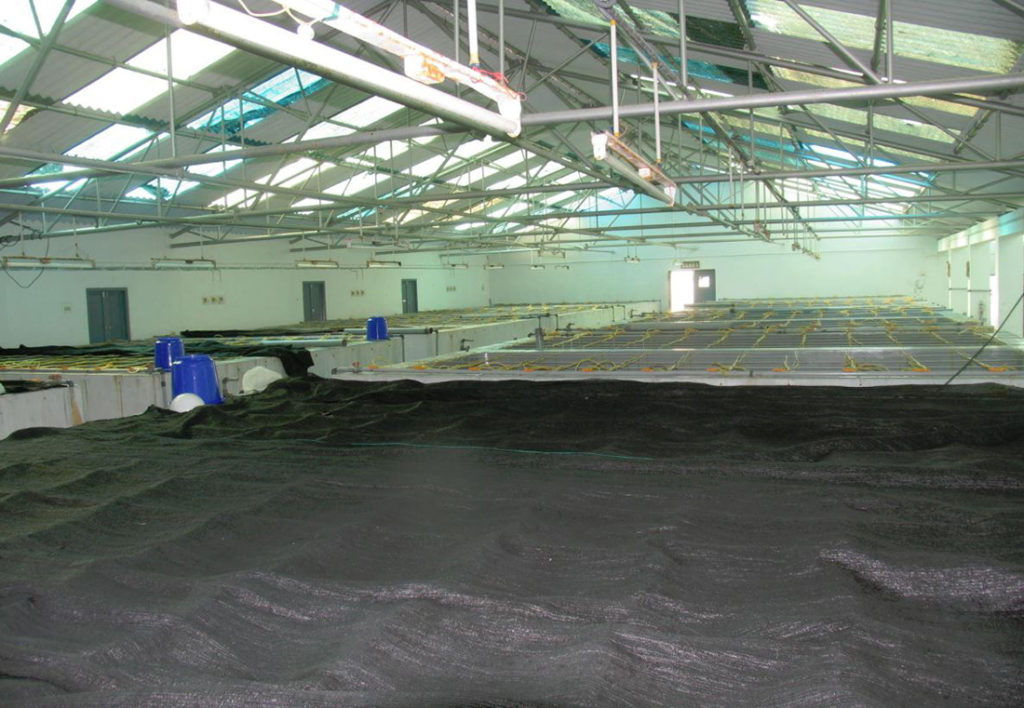
Health & Welfare
A study of Zoea-2 Syndrome in hatcheries in India, part 3
In this third and final part, authors present recommendations to help reduce the incidence of Zoea-2 Syndrome, which is not caused by any known infectious agents in P. vannamei hatcheries in India.
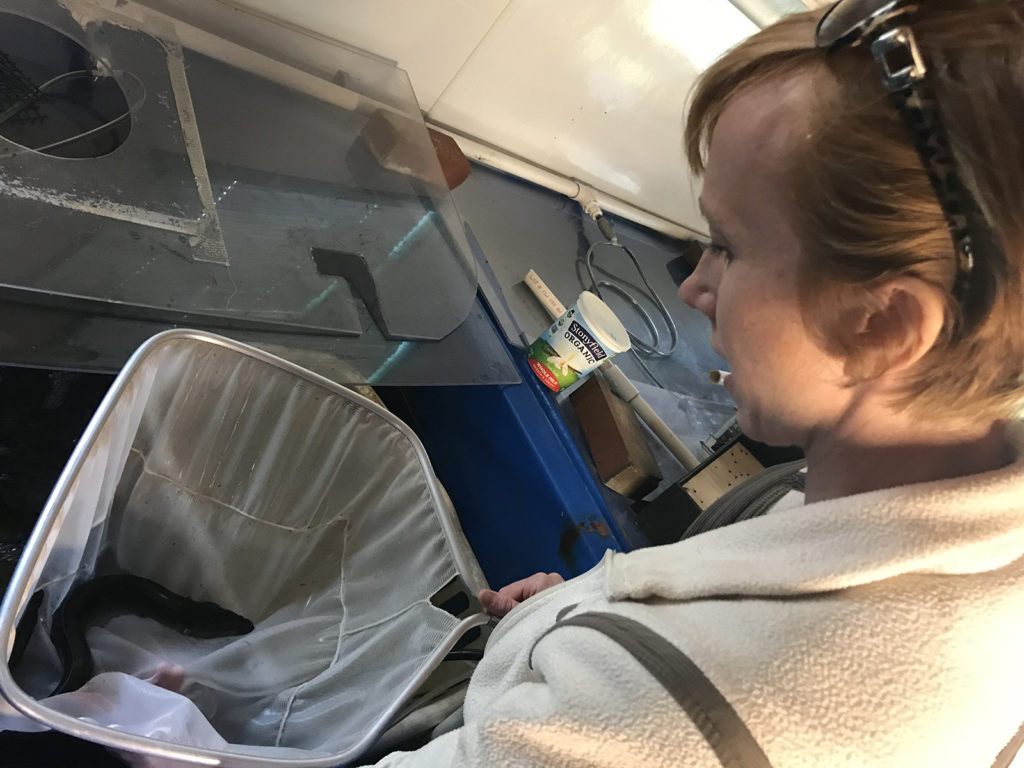
Innovation & Investment
American Unagi brings eel farming back ‘home’
Sara Rademaker launched American Unagi to shift eel farming to American soil, where the eels are from. Why? Because of the novelty, and because she saw an opportunity to do things better.

Responsibility
An African prison where fish will be farmed and lives saved
A nonprofit organization working to improve conditions in African prisons is hoping tilapia ponds, tended to by inmates, will aid in their nutrition. A small donation from the Global Aquaculture Alliance will go a long way.


